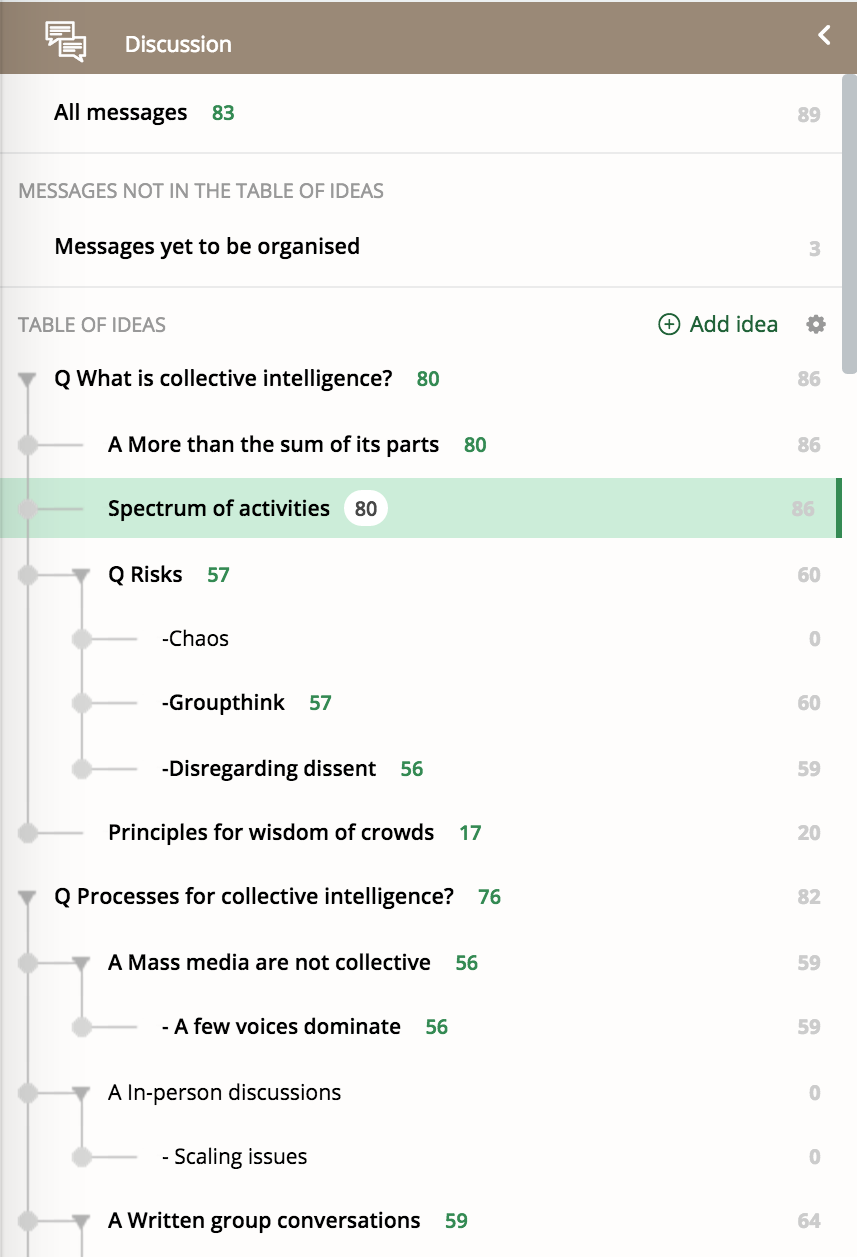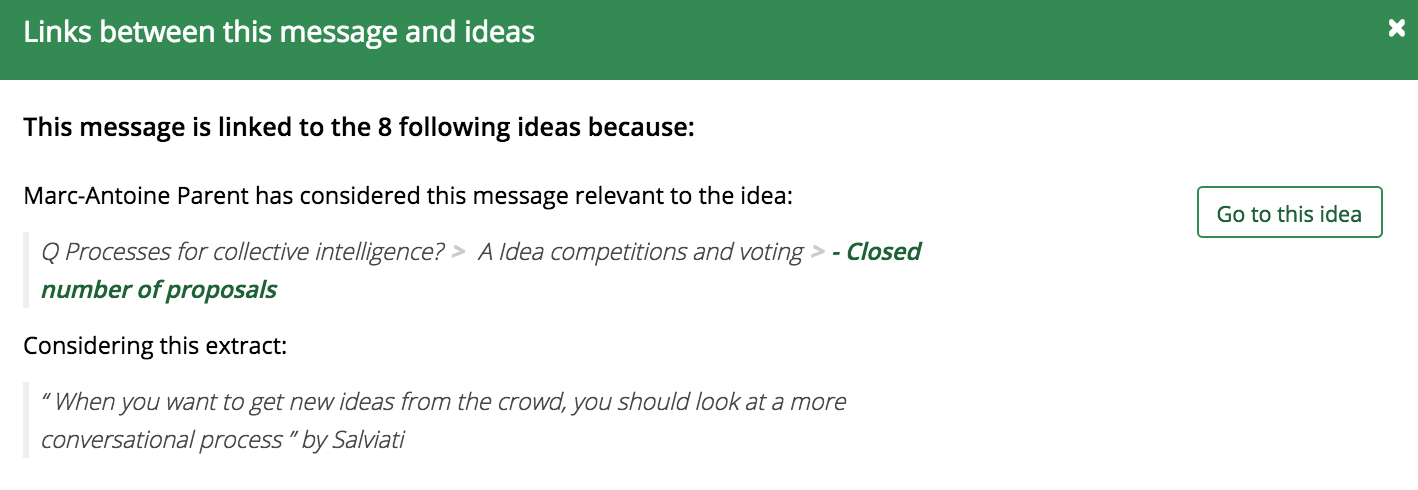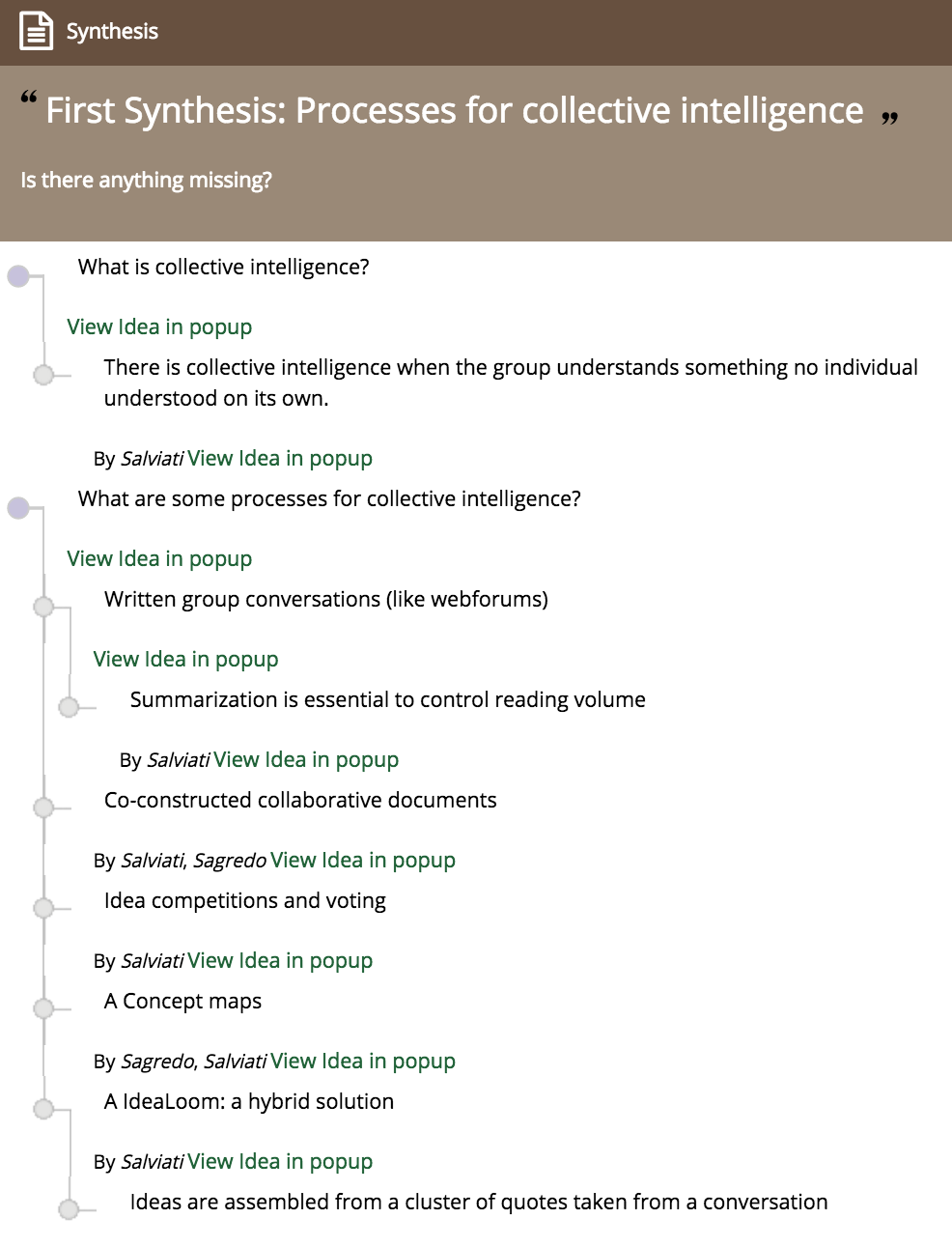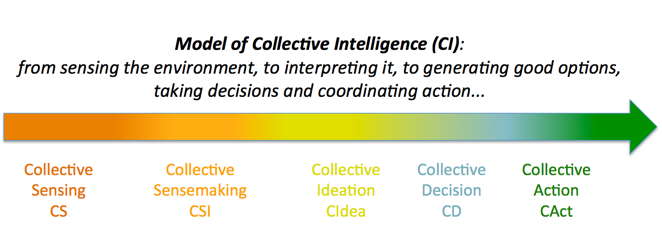Note: a more complete manual was kindly contributed by JDN. We will integrate this work soon.
IdeaLoom combines two structures: Ideas and Messages.
Forum
Messages are organized as in an advanced web forum, with the following key features:

- Threaded conversations
- Answers to a message are displayed as a foldable hierarchical list. Flat lists, as used by Facebook or Gmail, are adequate for reactions (which do not themselves call for answers) or quick back-and-forth between a few people, but are impossible to untangle when multiple participants respond to a message of a few days ago, which is frequent in a large community.
- Interaction with email
- IdeaLoom can import conversations from mailing lists, which are still a major means of communication for many communities of practice. It can also import conversations from a RSS/Atom feed (used by many blogs), Facebook page, and even (with the help of Edgesense, a Catalyst technology) a Drupal site. IdeaLoom can also notify participants of selected messages by email, and can replace a mailing list; email replies to those notifications will be part of the IdeaLoom conversation. This way, it is possible to use IdeaLoom to organize a conversation that happens in an established community, without asking the community to learn a new tool.
- Automated translation
- IdeaLoom can use automatic translation services to display translated versions of messages to a linguistically diverse community
- Moderation
- Messages can be moderated by designated individuals
Table of Ideas
Parallel to messages, IdeaLoom maintains a structure of ideas. The ideas form a concept map of the conversation topics, and are progressively created, enriched and refined as the conversation progresses. Selected participants identify ideas in the conversation as quotes extracted from the messages. Those extracts are what mostly bind ideas and messages together. Messages can also be created directly in the context of an idea, and be bound to this context without an extract.
Features of the idea system:

- Table of ideas
- At the moment, all ideas are represented in a table of ideas. This structural view is meant to convey the shared understanding of the community, as extracted by the idea harvesters.

- Message extracts
- Extracts can be taken from any message, or from a web page. Extracts can be stored in a clipboard, or connect a message and its subsequent thread to an idea.

- Related messages
- From selecting an idea, you get to view all conversations (message threads) that were related to that idea, or to any sub-idea of the selected idea. You can see at a glance whether new information was added to that idea. Sub-communities of conversation can form around any idea. It is also possible to show ideas related to a given message.

- Synthesis
- The community moderators can propose a more narrative version of a subset of the table of ideas, where each idea is described at some length. These narrative sytheses can be pushed by email to participants, to mark a new phase in a conversation, to invite fragmented sub-communities to gather, or to rekindle a dying conversation. It has been observed that synthesis can provoke passive participants to give key input.
- Collaborative idea edition
- Edition of the table of idea is real-time, and multiple community harvesters can be working on the same table of ideas
- Announcements
- Moderators can give instructions to participants as announcements, showed above the messages, in the context of a given idea. Optionally, this announcement can also be displayed in the context of sub-ideas.
The Collective intelligence spectrum
Collective intelligence spans a spectrum of activities:

- Sensing
- Gathering information from the environment, and organizing information gathered by others
- Sensemaking
- Making sense of that information, and of one another's interpretation of that information
- Ideation
- Creating new ideas in response to challenges, and collectively improving on one another's ideas
- Decision
- Reaching a decision together, with a sense of collective ownership of the decision process and its result
- Action
- Committing to act, coordinated action towards a common goal
The following tools have been designed to support some of these aspects of collective intelligence:
- WebAnnotation
- In support of Collective Sensing, it is possible to associate external web pages with an idea, using web annotation tools
- Creativity sessions (cards and videos)
- In support of Collective Ideation, IdeaLoom allows the use of creativity tools, which suggest either random inspiration cards or YouTube videos based on the most frequent terms in the ideas
- Token voting
- In support of Collective Decision, IdeaLoom allows to rate proposals by assigning tokens of various sorts from a limited set, which allows to easily pare down a high number of proposals, as can result from Collective Ideation.
- Multi-criterion voting
- Also in support of Collective Decision, IdeaLoom allows the construction of voting sessions on any set of ideas (proposals). The voting sessions allow to rate each proposal according to multiple questions, including multiple choice, yes-no questions, 1-D and 2-D scales (Lickert). This allows to rate a small number of proposal according to many axis of decision.
Community management
IdeaLoom is designed to be methodologically neutral, and does not dictate the roles in your community management process. You can define your own roles, and what permissions are attached to those roles. Your discussion can be public, private (by invitation), or allow restricted self-registration; participants can register with email or social network accounts (and IdeaLoom can keep track of their identity across accounts).